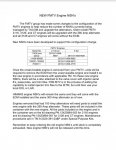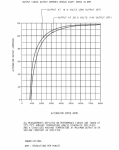- 2,333
- 5,795
- 113
- Location
- Portland, OR
Induction motors - which brushless alternators share much in common with - are REALLY dumb. If you ask more of them then they are rated for they will GIVE everything they have to try to stay at their rated RPM and will die in the attempt if too much load is put on them. The amount of slippage between the rotor RPM and the rotating field causes massive increases to induction and therefore heat (see a description of how an induction cooktop works). If you drag that motor down to hundreds of RPM below it's magnetic field rotation it will quickly overheat and I have seen them glow red, turn the winding varnish black, and burst into flames.
The exact same thing happens in reverse to an induction (brushless) alternator. Ask more than it can deliver and the rotating magnetic field being produced can't travel as fast as the rotor shaft RPM's and you produce a TON of heat and it literally cooks the windings till the varnish burns off and they short out.
The exact same thing happens in reverse to an induction (brushless) alternator. Ask more than it can deliver and the rotating magnetic field being produced can't travel as fast as the rotor shaft RPM's and you produce a TON of heat and it literally cooks the windings till the varnish burns off and they short out.





